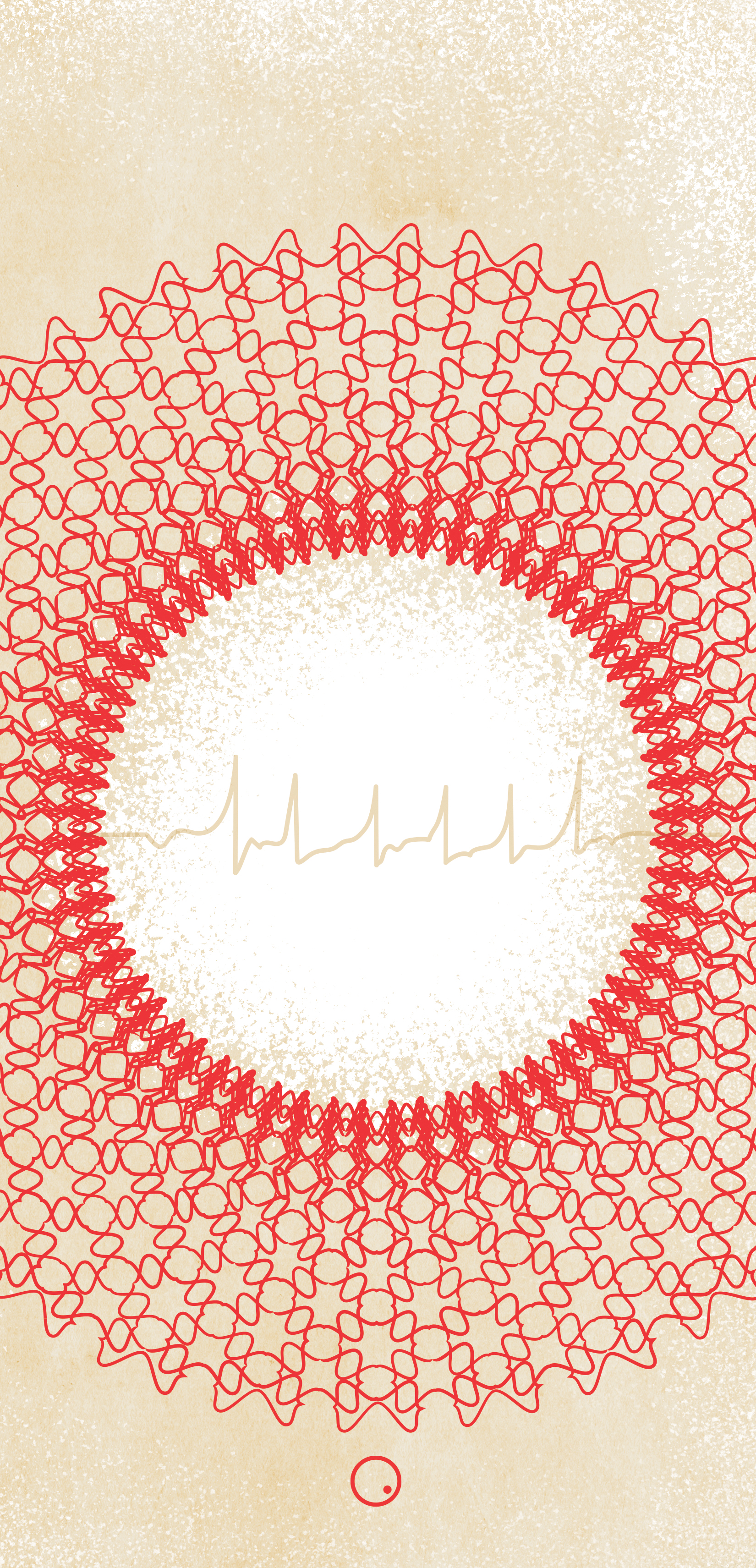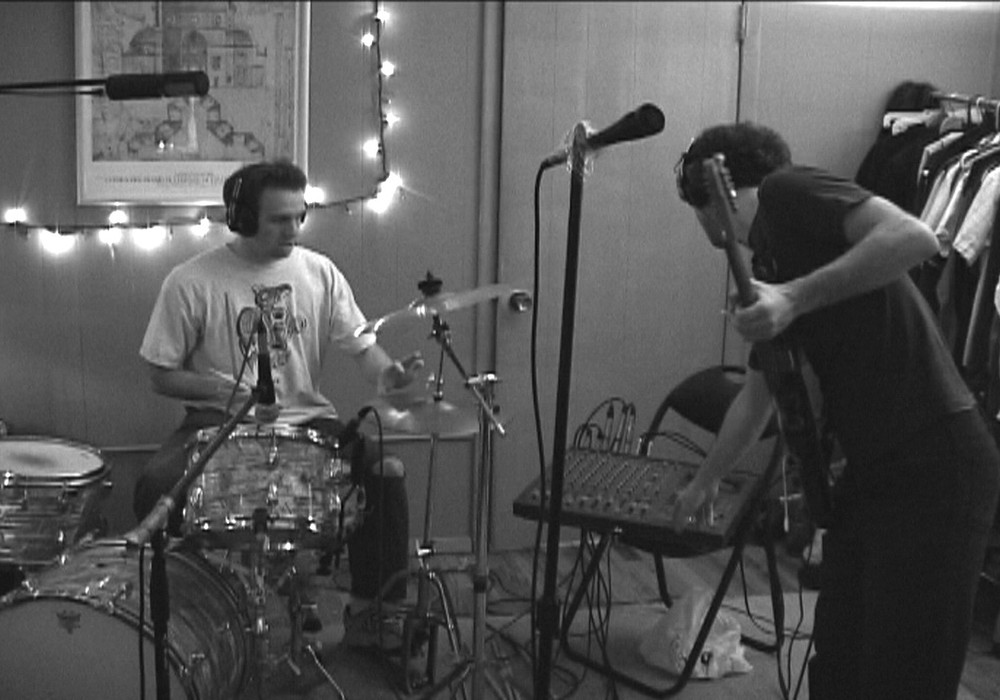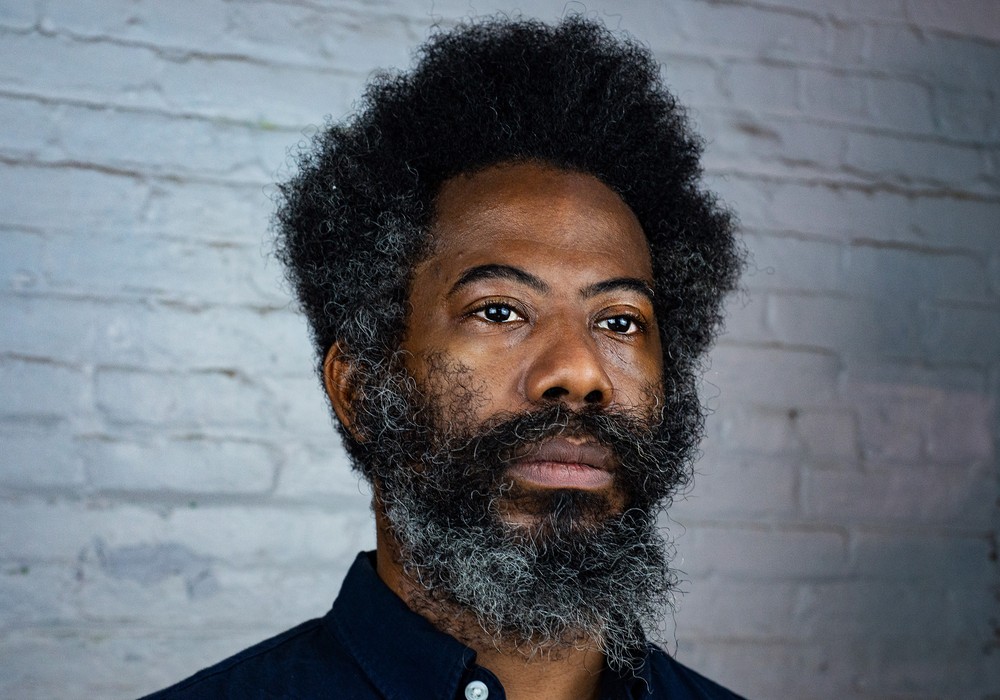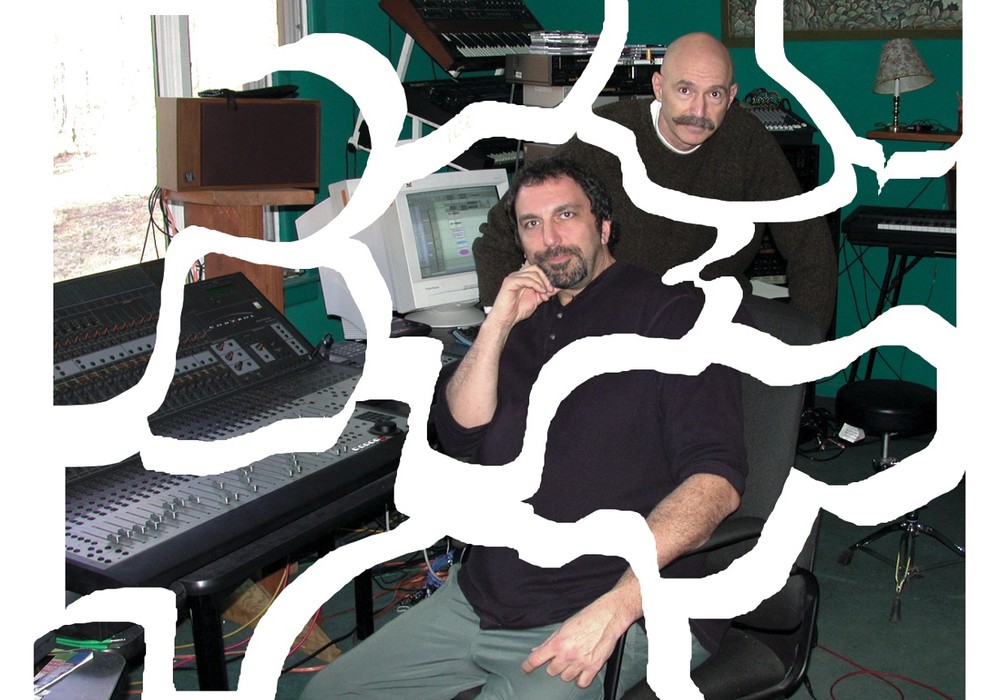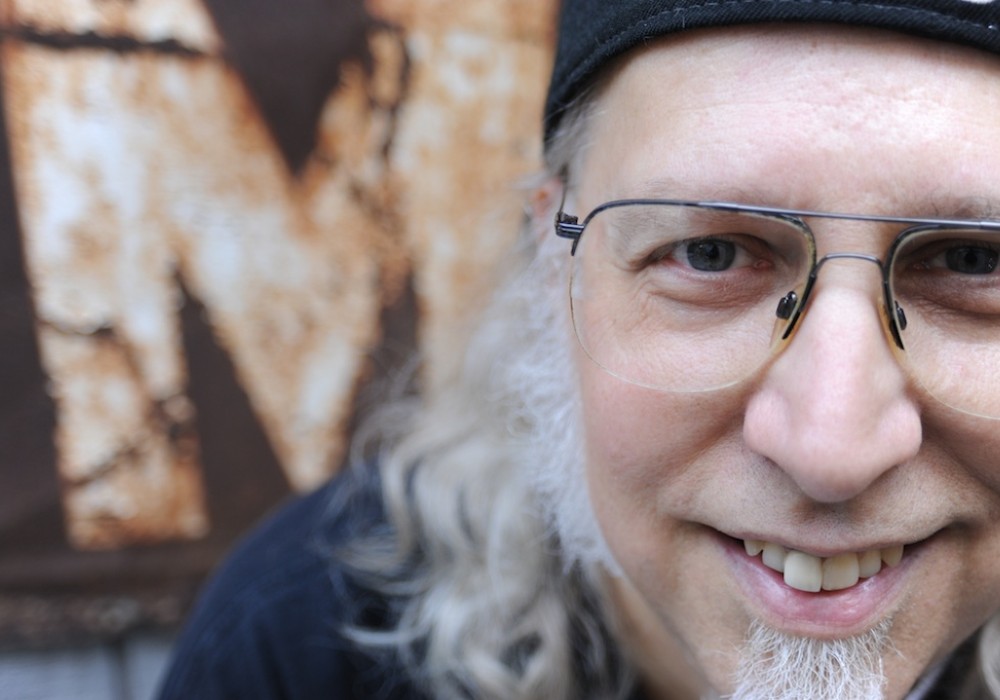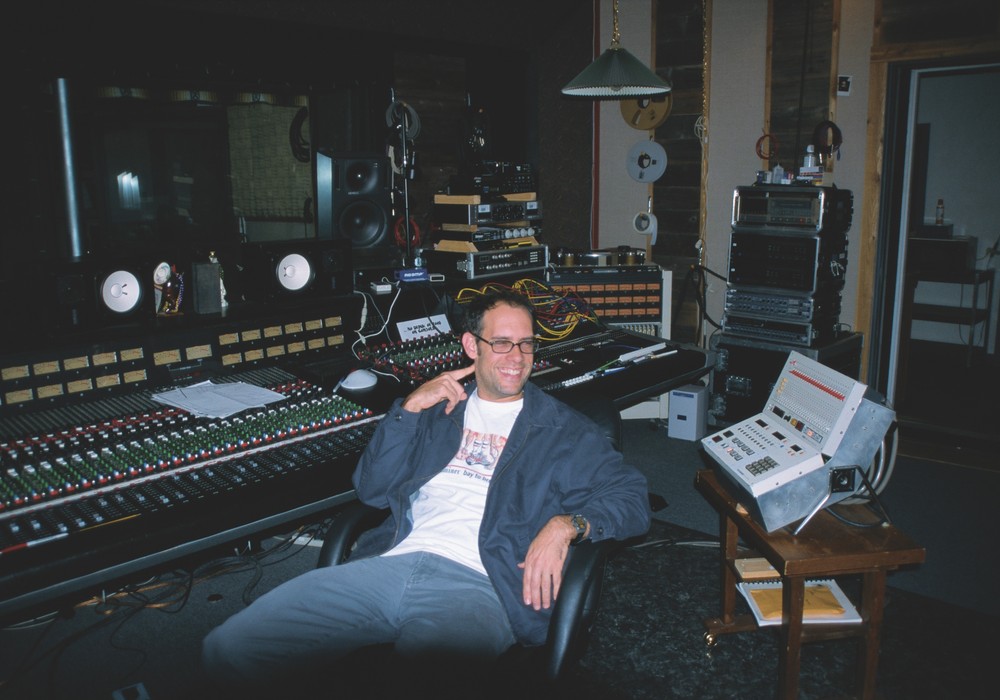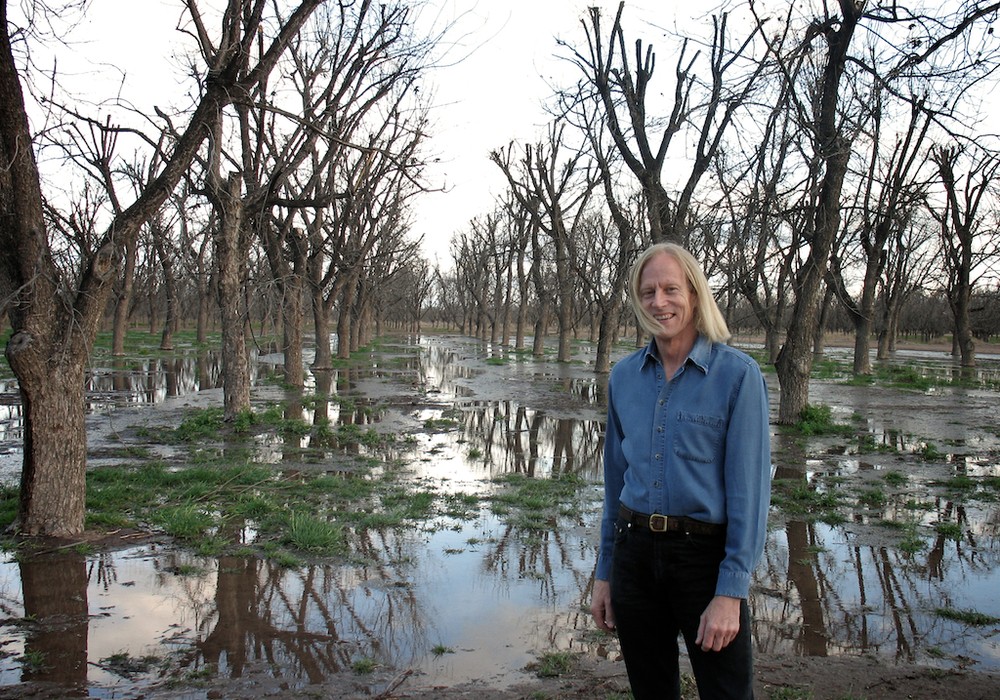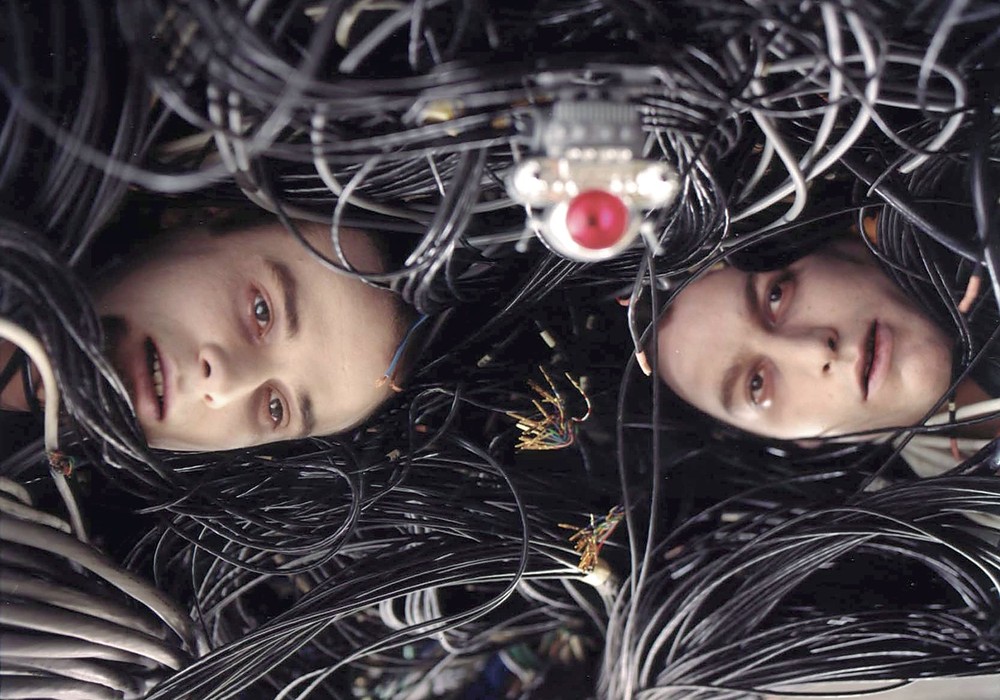When I found out that I would be moving to Minneapolis, my friend Peter Holmstrom gave me Ed Ackerson's number. He told me Ed was a guy that I would have a lot in common with. In Portland, I had operated a small recording studio and was a bass player in several bands and spent most of my time recording, mixing or playing. I felt like the busiest man in town, but I had nothing on Ed. He owned and operated a pro recording facility (Flowers), ran a busy independent record label (Susstones), and played guitar in a couple of the biggest bands in the Twin Cities (Polara, Kraig Johnson and the Program). A quick Google check on his name brought up links to the Jayhawks, Bob Ezrin, the Blake Babies, and Spiritualized. The information available on the site for Flowers recording facility was what really blew me away: Trident Series 70 console, Studer A80 2" 24-track, tons of vintage guitars and amps and a very impressive list of outboard gear and microphones. I was now very interested to meet the man who could manage to find a way to pull all of this off. Ed has been involved on many different sides of the music biz through the years. His band Polara had a four-record run on Interscope, touring with the likes of Spiritualized, Garbage, The Dandy Warhols and The Wallflowers. Bringing experimental, psychedelic pop music to a largely baffled public, Polara was widely tipped as a "next-big-thing" until it fell through Universal Music's corporate cracks. Ed and the band bowed out of the major label race stronger than ever, lineup intact and with a great studio at their disposal. As a producer/engineer, Ed's resume shows a long list of major and indie label credits, including ongoing work with his friends The Jayhawks. In the last couple of years Ed has switched his focus back onto the indie world, and his label Susstones has become a prime mover in the Minneapolis scene with releases by Polara, Astronaut Wife, Faux Jean, Mark Mallman and others. Flowers Studio, the headquarters of all this, is a favorite studio for a growing number of regional bands and engineers. It has been two years since I arrived in town and now I am working with Ed at Flowers as the house engineer. I need to remember to thank Peter for that phone number.
You were recording your own bands from the very start, then?
It started out that way because there was nobody in Minneapolis that was making records that were anything like the kind of records that I was hearing in my head, you know? I mean, it was the '80s and so everything was really "technological" in that stunted '80s way, all the local studios were into the "modern", "pro" techniques of the time, which meant everything was recorded very dry and then gated on top of it. The studios were all big, expensive and weird — and outright hostile towards indie or punk rock.
But obviously you did move up to the world of "proper" studios in time...
Tommy Roberts [now known as Zachary Vex, electronic wizard and guru behind Z.Vex effects] started the Underground, which was really Minneapolis' first purpose-designed indie rock studio. They had a good live room, they had a good-sounding Soundcraft 1600 board and a Tascam MS-16 one-inch. Coming from the 4-track, that was really great stuff. Tommy was a really creative, fearless and unorthodox engineer and he and I had a lot of fun working on recordings together. I learned a lot from watching him. So that was where I really got on my game. Before that I was just doing the best that I could possibly do with a 4-track or an 8-track and a couple of Shure Unidyne IIIs!
You eventually moved on to other studios, and this changed things?
I started to do work at some more "pro" studios, and the exposure to top-end mics and processing really changed my whole thing around. I kept having these experiences where I'd throw a U67 onto an instrument, PFL it, and go, "Oh wow, this just sounds good on its own." No need to over-EQ or compress to get an exciting sound. Coming from a place where it took some work to achieve exciting sounds, this was revelatory. I turned 180 degrees from assuming that you need to work hard to get a sound to now assuming that it should be very simple. Now I get worried if I feel the need to do anything too complicated to get a sound happening. And I am absolutely certain that this change came from access to really good mics and outboard that actually allowed me to hear how good things sound on their own.
You just put a mic on that guitar and it sounds awesome.
If it doesn't sound awesome, change the guitar, amp, or player! The fix comes at the source, always. It's the same thing with EQ or compression. These days I just don't really touch much of it at all. In tracking, I try to get it where you put all of the faders on your board at 0 and that's your mix.
So you knew Paul Q. Kolderie at this point?
Yeah, I'd met Paul, it was a weird fluke, but he just happened to be in Minneapolis over Christmas 1994 visiting his parents, who live here. He went and saw a band that I had been recording called Shatterproof. Paul was really impressed with the band so he came up and was kind of talking to them and I knew who he was so I went up to him, tied to act menacing, and said, "You're not going to steal my band are you?" And he and I became really good friends really quickly. We completed that record that I had been working on for Shatterproof, which then came out on Fort Apache/MCA Records. Part of that record was done at Fort Apache in Boston so when I was out there I got to know Gary Smith [who went on to manage Polara] and the rest of the office, and I already sorta knew Tonya Donnelly and a few of the other people around there. Fort Apache at that point was really hot. They had done so many legendary recordings there: the Pixies, Dinosaur Jr., Blake Babies, Big Dipper, Volcano Suns, Lemonheads, Throwing Muses, Uncle Tupelo, Buffalo Tom and it goes on and on. It's mind-boggling. That place is hallowed ground. Kolderie has just recently opened a new studio in the original space called Camp Street Studios.
Everybody wanted to go to Boston then to record at Fort Apache...
It's a great room! Around the time that I first was out there working was when they had mixed The Bends. Paul and Sean [Slade, Paul Kolderie's long-time collaborator] had recorded the first Radiohead record and were then asked to mix The Bends, so that record was floating around the office and was obviously one of the coolest records that anybody had ever heard. The energy around that place was just phenomenal, with a fantastic musical room, and that wonderful Neve 8078 that they had that sounded just amazing. You just couldn't miss at that place.
So this is about the time you bought the space for Flowers, your recording studio?
No, I bought the Flowers space in '96.
And this space was a flower shop/greenhouse that you had first seen...
I had been seeing it since I was a kid and I was always thinking, "Whoa, that would be the best place in the world to put a recording studio." And then miraculously I was driving down the street one day and there was a "for sale" sign in front of it. And I was like, "Wow that's interesting, let's go see how much it costs..." I figured it was going to be a really large amount of money and it actually was not. But the reason it wasn't was because it was completely destroyed inside. The previous owner had done a lot of demolition in preparation to turn it into a photo studio. And then he ran out of money. So when I bought the place there was no heat or HVAC of any sort, the electrical service was lamp wire tacked up to the wall, there was no running water — it was just a complete disaster area. It was like buying a 5000 square foot warehouse. Which worked out really well for me because if I had bought a traditional space I would have had to tear everything out anyway. At that point pretty much all studios in Minneapolis were like dungeons, everything was real dark, no windows, low ceilings, fluorescent lights. I really wanted to have high ceilings and real sunlight, which is why I loved this place. I knocked out the second floor in part of the building so I could have 20-foot ceilings in the tracking room. I just don't think you can get a really good live drum sound in a room with a 10-foot ceiling. It's really hard to do. And it's nice to have natural light and be able to look outside and feel like you're in a nice natural environment that has life in it. Instead of being in some warehouse in some downtown industrial district looking out at some rusted out old cars. I didn't want to have that kind of vibe. And even though you wind up being stuck inside for twelve hours a day, it's nice to have a vicarious participation in the real world by watching it get light and dark outside, seeing if it's raining out there, et cetera.
You have mentioned that the design of the Flowers control room came from the control room at Fort Apache...
One of the things that I was really frightened of building the place was getting somebody to design a control room. You don't really know what the room is going to sound like until it's built and you're in it. You never know. So we looked at the geometries of the building here and we realized that we could pretty much take the blueprint for the control room at Fort Apache and just insert it in the building here. And I was like, "Okay, that's great," because I really liked the sound and shape of that room a lot and I knew it would be the right size for my console... and so that eliminated an X factor from the process, which was very nice. It was great to know that the control room was going to be pretty close to someplace that I already enjoyed working, and really from day one the control room has been right and I haven't done anything to it at all...
So you had purchased your Trident console... did you buy the Trident and the Studer at the same time?
No, the Trident was what made me have to build a room actually, because I found the Trident and it was such a good deal that I just had to buy it. I literally couldn't fit it into the front porch of my apartment, and that was the sort of, "Okay, I have to build a room now" moment for me. I looked around for a long time to find the right tape machine. I was very fortunate that I found this Studer A80 because it was in very good shape. The A80-series electronics are divine, great late '60s — early '70s technology. It immediately imparts this sound that you've heard on so many records you love.
How did the Susstones label come about?
There had been an earlier incarnation of Susstones that started when I was in high school with my friend John Kass. We put out a lot of seven-inches and some albums by bands from around here. I drifted away from involvement with that in about 1990 'cause I was getting really involved with production and touring a lot, and John eventually left the name behind, too. The new Susstones was conceived in '98 as an umbrella for Polara and our circle of friends to operate under. We were using it initially as the Polara website, a place to post news and to put up live tracks and demos for people who were interested in that stuff. We made the decision when we left Interscope that, instead of chasing after another deal with some big label, it might be more fulfilling to start our own little cottage industry. I'm a believer in the "fighting the good fight" idea of indie rock, which is where I've always come from. And also the concept that if you have something that you know is real and you give people an opportunity to hear it, good things can happen. So one of the things that I would hope that Susstones would be able to do is get the visibility of some aspects of the Minneapolis scene up a little bit nationally. There are a lot of people around town who we thought were really talented, and with the studio at my disposal it was natural that we start developing some new acts. One of the reasons that I built this room and started the label was that I wanted to have the ability to develop stuff. If there's a band that I wanted to record and there wasn't a budget for it, I wanted to have a place to take them and do it for cheap or for free if it was necessary. And there was no other place in town where I could get that kind of arrangement. I love the Minneapolis music community, but there has been a real lack of music business infrastructure here. We're trying to help out and do our bit to stir things up.
You've been really lucky that you have been able to almost exclusively work with things that you are really into.
I think it has a lot to do with how heavily leveraged you are. I mean, if I had bought an SSL and a lot of expensive stuff that put me really in debt... if you decide to really get into the studio arms race, you can wind up being so leveraged that you have to take any work that comes along... whether or not you like it, agree with it, whether or not it's going to be a good vibe to have in your room. I have tried really hard to not get myself backed into that corner and that has allowed me to keep the energy in this place very up and really constructive.
I look around the room here and I see you have like 20 amps and probably close to 40 guitars and basses...
Yeah, I've got most things that you would need as far as guitar amps or drums kits or guitars go. I have a keyboard-collecting problem, too. I see the whole studio as a giant instrument, and it's all about having the devices that you need to create and then translate sounds that you hear in your head. One reason why I have so much stuff here is that I like to have everything totally dialed in. It all works and it's all in really good shape. So if you have an idea you just pick up the instrument and do it. The gap between concept and execution is much shorter and that's a real goal for me. If there's an idea, express the idea with minimal technical or procedural interference. There's also always a really good drum kit mic'ed at all times so that if something wants to happen, it can just happen.
For the rock sound you are a big advocate of the 2" tape, yet you also do a lot of work in the computer... Routinely on a session here you will have Digital Performer running continuously synced up to the 2" machine.
Yeah, everything is always locked. The idea is that at any point you can drop anything onto the computer, do something with it, and drop it back to tape. For the last five years that's just how I've worked. I tend to comp as I go. It's really nice to do your guitars and vocals and stuff on tape because it sounds better but obviously you want to edit on the computer because editing on tape is a lot more laborious and you can make mistakes. And then if you run out of tracks on the 2" machine it's always great to have the computer tugging along for that extra stereo keyboard part or that reverse reverb thing that you didn't want to waste tape tracks on. That's a really handy thing to be able to do, to work in that locked environment so that there's no real practical line between working in analog and working in digital.
As far as where Flowers is going, you have a plan to build another room to be a separate overdub and postproduction space.
Yeah, I want to have a completely disk-based mixing and editing room that can be used for video and post stuff as well as picking up some overflow when things are busy in the big room. One of the things that Susstones is moving towards very rapidly now is doing a lot of surround work. From this next round of releases that we are doing for this spring onward, we are planning on having surround mixes on everything. So I want to have a room that is specifically designed to do 5.1 in. We just got a 1968 Electrodyne mixing console, which, as I understand it, originally lived at the Record Plant in New York and was subsequently owned by Jack Douglas. The new board is going to be the analog switchboard in the new room for monitoring, tracking and light overdubbing. All of this will take some work before it happens.
Now Electrodyne — and I didn't know this till I saw yours and did a little research — is basically the ancestor of Quad-Eight and API mixing consoles. Electrodyne was originally building mixers for Quad-Eight.
Right. There's something that I just think is wonderful about having a room intended for highest-tech multi-channel audio that as a centerpiece has something that is 35-plus years old. It's a very Flowers thing to do. That board is about as good as it ever got as far as Class A audio circuit design goes. It's 100% point-to-point hand wired, all discrete, transformers the size of your fist, the finest construction methods. Legendarily that board is the one The Who recorded on when they worked at the Record Plant in 1969 and 1970 as well, and, being a huge Who fan, that was kind of a bonus, you know? Its intriguing to think about what records were done on it, because if you think about it being at such a major New York studio in the late '60s... It's kind of dizzying. So, at some point I would really like to talk to one of those guys from the studio who might remember the console and see what the story is.
You're talking about always including a 5.1 mix on upcoming Susstones releases. Do you see the hand-off from CDs and two-channel audio to DVD-A and SACD multi-channel happening soon?
Oh yeah, it's already moving that way — even on the indie level. I think that the home surround systems that people are getting are improving...
They're getting extremely popular.
Yeah, they're ubiquitous and it's kind of weird because all of our friends are indie rock type people who are still fairly low tech in some areas, so not many of our people are listening in surround. But, if you're talking about people who live in the 'burbs or who actually have disposable income, everybody's got this stuff now.
It will be a standard like color TV. Nobody has a black and white TV anymore.
Exactly. Cars commonly have surround systems in them now. Furthermore, surround and high definition content pretty much have to be delivered in uncompressed PCM format...
Which means no MP3s.
Which means that if you have a six-channel song that is delivered as PCM audio it's going to take up a lot of space. Each song could be up to a half-gig or something like that. So it's not like people are going to be throwing these files around to each other on the web. Not yet, at least.
Consumer DVD burners have only been around for a year or so. This really is a technology that is still in its infancy.
But that's an exciting thing because there are no rules yet. Because no one has established how you are supposed to handle that stuff yet. There are opportunities right now to do things however you want and see whether it sticks or not.
There are no clichés yet.
Right. There are huge opportunities to do really fun, freaky stuff with 5.1.
Speaking of the future of recorded music, how do feel about the MP3 phenomena and what it is doing to the concept of the album now that everybody seems to be willing to just buy the hit single or favorite track and burn their own CDs?
The whole music market and climate is irrevocably changing, will never be the same again, however much you might wish it. It will never change back to what it was like where people bought and listened to entire albums, or would at least buy albums to get the single. [laughs] I am still, however, a real fan of the album. There's a couple of reasons for that. First of all, the sort of artists I like tend to have a fairly large conceptual vocabulary, have a number of things to say over the course of a record. I rue the idea that the album as a statement may turn into an archaic, boutique concept. Because then, as an artist, you are only as good as your last single. What if you aren't about singles? Also, a label used to have to sign an artist to do at least one album and they would have to provide a budget sufficient to cut 10 or 15 songs. You would have a bunch of shots in the course of making this record to make a song that might stick at radio or might get people psyched about it. It's sad now because it looks like labels might start signing bands to do one or two song deals. It's like, "We'll give you guys $5000 to cut a song and put it up on the iTunes store and if it flies then we'll give you guys a contract for another song. But, if it doesn't fly then in two months you're on the street." Of course, there'll inevitably be language in the contract that will tie you up for years if they do decide to option you.
And look at how many great bands didn't hit one out of the park on their first record or even two... I mean Elton John's first record bombed.
Many great bands broke through only after several albums of foundation-laying. There is plenty of historical evidence that patience can pay off big time. Dark Side of the Moon was Pink Floyd's eighth album! Bowie tinkered for years before he got it right. The Clash didn't have an appreciable US hit until their fourth record. REM... so many bands took some time.
If all those bands had been dropped after their first record...
I am very much a beneficiary of that last great era of the major label A&R patronage system, where the philosophy was, "We will give you the space and resources to develop over a period of time with the hope that at the end of it something good will happen." I'm very grateful that I was given that opportunity. When Polara set down what we needed to see in a contract from a label, we came up with a short list of things that we wanted to have at the end of it. We knew, however it came out with the label, that we would want to continue making records and moving forward as a band. Assuming that we might never sell a lot of records and that we might waste three to five years doing that... first and foremost we wanted to have the ability to continue to record on a world-class level on our own terms. If it meant that we would end up putting our own records out, so be it. This was worst-case doomsday planning when we were talking about it in 1995, but it's exactly what happened. And as things have worked out, I'm not at all unhappy about where I am now.
Eric Furlong is the bassist for Sunset Valley and the man behind the ever-moving Jet Propulsion Labs studio.
